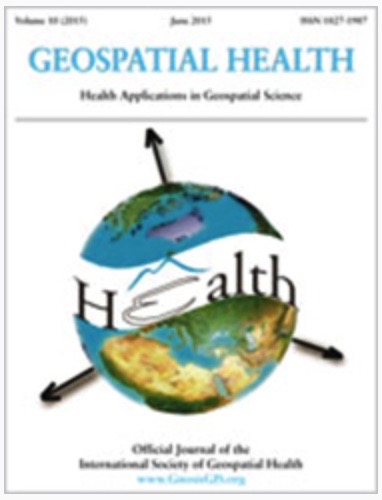A spatial analysis of private well water Escherichia coli contamination in southern Ontario
Published: 1 November 2013
Abstract Views: 2049
PDF: 1118
Publisher's note
All claims expressed in this article are solely those of the authors and do not necessarily represent those of their affiliated organizations, or those of the publisher, the editors and the reviewers. Any product that may be evaluated in this article or claim that may be made by its manufacturer is not guaranteed or endorsed by the publisher.
All claims expressed in this article are solely those of the authors and do not necessarily represent those of their affiliated organizations, or those of the publisher, the editors and the reviewers. Any product that may be evaluated in this article or claim that may be made by its manufacturer is not guaranteed or endorsed by the publisher.
Similar Articles
- Sang Min Lee, Dong Woo Huh, Young Gyu Kwon, Local healthcare resources associated with unmet healthcare needs in South Korea: a spatial analysis , Geospatial Health: Vol. 20 No. 1 (2025)
- Alireza Mohammadi, Bardia Mashhoodi, Ali Shamsoddini, Elahe Pishgar, Robert Bergquist, Land surface temperature predicts mortality due to chronic obstructive pulmonary disease: a study based on climate variables and impact machine learning , Geospatial Health: Vol. 20 No. 1 (2025)
- Worrayot Darasawang, Wongsa Laohasiriwong, Kittipong Sornlorm , Warangkana Sungsitthisawad, Roshan Kumar Mahato, Spatial association of socioeconomic and health service factors with antibiotic self-medication in Thailand , Geospatial Health: Vol. 20 No. 1 (2025)
- Enríque Ibarra-Zapata, Darío Gaytán-Hernández, Yolanda Terán-Figueroa, Verónica Gallegos-García, Carmen del Pilar Suárez-Rodríguez, Sergio Zarazúa Guzmán, Omar Parra Rodríguez, Socio-spatial vulnerability index of type 2 diabetes mellitus in Mexico in 2020 , Geospatial Health: Vol. 20 No. 1 (2025)
- Kella Douzouné, Joseph Oloukoi, Ismaila Toko Imorou, Toure Gorgui Ba, Derrick Chefor Ymele Demeveng, Mapping livestock systems, bovine and caprine diseases in Mayo-Kebbi Ouest Province, Chad , Geospatial Health: Vol. 20 No. 1 (2025)
- Mai Liu, Yin Zhang, Impact of climate change on dengue fever: a bibliometric analysis , Geospatial Health: Vol. 20 No. 1 (2025)
- Jonas Schoo, Frank Schüssler, The future of general practitioner care in Lower Saxony, Germany: an analysis of actual vs target states using a GIS-based floating catchment area method , Geospatial Health: Vol. 20 No. 1 (2025)
- Wentao Yang, Fengjie Wang, Yihan You, Zhixiong Fang, Xing Wang, Xiaoming Mei, Optimizing vaccination sites for infectious diseases based on heterogeneous travel modes in multiple scenarios , Geospatial Health: Vol. 20 No. 1 (2025)
- Peter Nezval, Takeshi Shirabe, Design and implementation of a spatial database for analysis of wheelchair accessibility , Geospatial Health: Vol. 20 No. 1 (2025)
- Néstor DelaPaz-Ruíz, Ellen-Wien Augustijn, Mahdi Farnaghi, Sheheen A. Abdulkareem, Raul Zurita Milla, Integrating agent-based disease, mobility and wastewater models for the study of the spread of communicable diseases , Geospatial Health: Vol. 20 No. 1 (2025)
1-10 of 457
Next
You may also start an advanced similarity search for this article.











